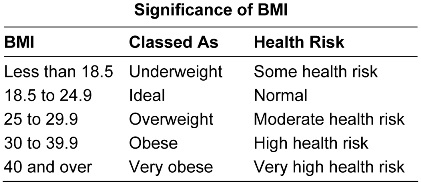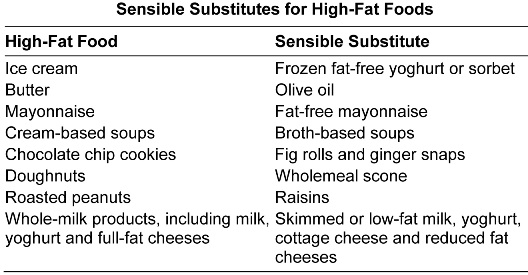 Obesity and weight-related health problems are the new epidemics in twenty-first century Ireland. Obesity is now almost as bad as cigarette smoking as a major preventable cause of premature death.
Obesity and weight-related health problems are the new epidemics in twenty-first century Ireland. Obesity is now almost as bad as cigarette smoking as a major preventable cause of premature death.  Obesity and weight-related health problems are the new epidemics in twenty-first century Ireland. Obesity is now almost as bad as cigarette smoking as a major preventable cause of premature death.
Obesity and weight-related health problems are the new epidemics in twenty-first century Ireland. Obesity is now almost as bad as cigarette smoking as a major preventable cause of premature death.
Obesity is defined as excess body fat. In men, body fat tends to accumulate particularly around the belly area and upper chest, which increases the chances of heart attack and stroke. In addition, the explosion of diabetes in recent years is directly related to the increase in the number of people suffering from obesity.
The amount of body fat you have and where it is distributed is very important for your health. What you weigh is less important than where that weight is distributed.
Some Scary Facts and Figures
Apples and Pears
Did you know that the shape of your body can be directly related to your later risk of ill-health? Pear-shaped people tend to store fat around their hips and thighs while apple-shaped people store fat around their bellies. This apple shape, known as central obesity, increases your risk of heart disease, diabetes and ill health. Big bellies beware!
What Are the Health Consequences of Being Overweight or Obese?
Obesity is associated with a whole range of physical conditions, including heart disease, high blood pressure, diabetes, arthritis, gall stones, hernia, varicose veins and several cancers, including bowel cancer. In addition, obesity may be associated with a range of psychological issues, including low self-esteem, poor body image and depression.
What Causes Obesity?
In the vast majority of cases, being overweight or obese is due to a simple mismatch between the amount of energy consumed, in the form of food and beverages, and the amount of energy expended, in the form of exercise. A typical adult male requires 2,000–2,500 calories a day, depending on age. The calorie requirements get lower as we get older. It is believed that 1 pound of fat equates to about 3,000 excess calories.
For many men the increased demands of work, career and family life mean that exercise habits and sporting interests often keenly pursued during the teens and early twenties get put to one side. The result is that much less energy is burned up. The sedentary lifestyle of modern living can mean hours in the car and sitting watching television with no opportunity to burn calories. Combine this with a high-fat diet of large portions and lots of processed food and the effects can be lethal. Even subtle lifestyle changes over time can lead to a net gain in terms of calories consumed. These excess calories are stored in the body as fat. A small increase in calorie intake (food or drink) combined with a small reduction in activity or exercise levels leads to net weight gain over time.
People often talk about weight problems being due to their metabolism but really it is about being active enough to burn up the calories or energy you take in each day in the form of food and drink. The best way to improve your metabolism is to exercise because regular exercise will allow you to burn up energy and fat more quickly.
Is It My Genes, Doctor?
Obesity can run in families. Fat parents often have fat children and the reasons for this may be due to family dietary and exercise habits and attitudes to food, as well as lifestyle and behaviour. However, the possibility of a ‘fat gene’ is the subject of much research. This fat gene may have given people a survival advantage in famine times. Nowadays, though, having a fat gene may mean you can’t break down fat and sugars properly and you have a tendency to store fat. This definitely increases your likelihood of becoming obese. So if weight problems run in your family, beware. Forewarned is forearmed.
Obesity is also linked with educational status and socioeconomic group. In the nineteenth century, fatness was a sign of wealth and status, whereas in the twenty-first century Western world it is now associated with poverty.
The sedentary lifestyle and high-fat, large-portion diets of the Western world, so-called modern living, is helping to ensure that each generation is heavier than the last. This is called ‘passive obesity’.
Psychological and emotional factors govern our thoughts and feelings towards food. Comfort eating or a tendency to binge eat can also be factors in obesity. Much rarer causes of obesity would include medical conditions that affect the metabolism, such as an underactive thyroid gland or Cushing’s syndrome.
Key Measurements
Waist Circumference
Size does matter and measuring your abdominal circumference or girth with a tape measure is a reliable indicator of whether you are overweight or not. This is perhaps the most accurate indicator of central obesity, in other words the amount of fat stored around the belly. The bottom line is that excess fat around your waist means a greater risk of future health problems. This can be measured using a simple tape measure. Wrap it around from your back to your front at the level of the belly button. As a man, your waist circumference should be less than 37 inches. A waist circumference greater than 40 inches is definitely bad news and increases your risk of many health conditions, including heart disease. The higher your waist goes over 40 inches the greater the risk.
Measuring your waist accurately:
Remember that your waist measurement is not the same as the size trousers you wear. Some men are astounded when their waists are measured and discover, for example, it’s 42 inches and protest, ‘Sure I only wear a 38 inch waist!’
Body Mass Index (BMI)
This measurement has been used since the nineteenth century to predict the likelihood of health risks from excess weight. It is calculated by dividing your weight in kilos by your height in metres, squared. For example a man who is 5’10” in height and weighs 13 stone and 7 pounds has a BMI of 27, which is calculated as follows:
Weight (13st 7lb) = 86kg; Height (5’10”) = 1.78 metres
BMI = 86/(1.78)2 = 27

BMI is used widely by insurance companies for actuarial purposes, in the context of life insurance, etc. While it is not an exact science, your BMI does give a fairly reliable indication of potential health risks associated with your weight. It has recently come in for some criticism as it is less accurate in athletic muscular men and the elderly.
Athletic men who are quite muscular can have a lot of heavy muscle but very little body fat. Their BMI tends to be falsely elevated. So they can have a higher BMI category even though their level of body fat is normal.
On the other hand, elderly people tend to have less muscle so their BMI can be misleading. In other words, a normal BMI in an elderly man doesn’t rule out obesity-related problems. Waist-to-hip ratio and belly size are much more significant in this age group.
Middle-Age Spread
In early middle age, an expanding waistline is accompanied by a rise in weight. However, as men get older and muscle turns into fat (which is lighter than muscle), you may be making and depositing more fat and yet the scales may remain the same. Therefore don’t rely too much on your weight alone or your BMI as you get older. Watch your waistline, which is a better guide to your fat stores and risk of health-related problems.
Waist-to-Hip Ratio
Your waist-to-hip ratio is a figure calculated by dividing your waist size by your hip size in inches. The upper acceptable limit for men is 0.9. There is a significantly increased risk of heart attack and stroke in men with a waist-to-hip ratio greater than 1. This measurement is more relevant than BMI in men over 75 years of age.
Know Your Numbers
The two key numbers to know with regard to your size are your BMI, which should be less than 25, and your abdominal circumference, which should be less than 37 inches. If they are below these thresholds, chances are you are in reasonable shape. If not, then it is never too late to make some positive changes to get your weight down. Remember, losing a little can make a big difference.
How to Measure Body Fat
Measurement of body fat can by done by using a body fat callipers and taking measurements of three areas of your body: your biceps area on the front of your arm, your triceps area at the back of your arm, and your abdominal or tummy area. By doing this you can calculate your percentage body fat using an age-adjusted table. Alternatively there are scanners available that can give a detailed and accurate analysis of body fat.
The Obesity Time Bomb – Why a Big Belly is Bad for Your Health
A big belly – excess body fat stored around the belly area – increases the risk of ill-health. Quite simply you increase your risk of developing some or all of the following medical conditions. These risks are increased significantly if your waist circumference is over 40 inches. So if you are apple-shaped – watch out.
The presence of any three of the above-listed factors diagnoses metabolic syndrome, which means you are at increased risk of developing heart disease, diabetes, stroke or all three.
The Health Benefits of Losing Weight
If an obese man can lose 10 per cent of his body weight there are major health gains (10 per cent of body weight in many cases would be about 10 kilograms, which is about 22 pounds):
What Should I Do if I am Overweight or Obese?
The key to losing weight and body fat can be summed up in one word: action. Knowledge and understanding always precede change. Informing yourself about the health issues relating to weight and obesity allows you to make informed choices. Simply measuring your belly circumference with a tape measure will give you a reasonable picture of where you are. Understanding the health risks and also the huge benefits of taking action can be a great stimulus for positive change.
Of course the challenge is to make some positive changes that will improve your overall health. The only reliable way to lose excess weight and body fat is to burn up fat by regular physical exercise (preferably daily) and to reduce your calorie intake by focusing on healthy eating patterns.
Some Keys to Reducing Weight and Body Fat:
Can You Reduce Your Belly Fat with Sit-Ups?
Sit-ups will strengthen your stomach wall muscles, which can help you to tone them. However, they won’t reduce your belly fat. The good news is that all exercise, especially aerobic exercise, which gets your heart rate and breathing up, is good to help you burn fat. Many men will lose belly fat before they lose fat elsewhere on the body.
Fad Diets – False Promises
You may have heard or read about it many times. Some new diet promises amazing weight loss in a short period of time with guaranteed results: ‘lose 20 pounds in 2 weeks’. Fad diets tend to promise dramatic results in terms of weight loss and altered body shape. This can sound tempting, particularly when these adverts are accompanied by pictures showing ‘before’ and ‘after’ photos.
However, if it sounds too good to be true then it probably is. These diets are usually bad for your health and in the long run generally do not work. They are popular because they offer a ‘quick fix’, relatively pain-free solution. In the short term people often do lose weight on these diets, but this weight loss tends to be caused by the loss of bodily fluids and lean muscle. Food choices are generally limited and, as variety is the spice of life, most people pack in these diets after a few weeks.
The reality is that the vast majority of people regain the weight they have lost over a short period of time. Indeed, most people who lose weight initially on fad diets end up putting on more than they lost. There are two reasons for this. Firstly, crash diets generally deprive us of adequate amounts of food, so, to compensate for this, our metabolism slows down, burning up less and less energy in an attempt to conserve fat stores. This is what happens to bears when they hibernate during the winter months. The problem is that when our metabolism slows down we burn less energy, meaning that smaller amounts of food can cause weight gain. Secondly, good old human nature causes fad diets to fail. For most of us, eating is one of the most pleasurable things in life. No one likes to be deprived of pleasurable eating for too long. Very few people can stick to a diet of boiled vegetables and carrot juice for long, no matter how promising the results.
The key to successful weight loss in the longer term is a combination of sensible eating habits and high activity levels to keep the metabolism up.
How to Cut Down on Fat
Fat can add taste and flavour to many foods. A certain amount of fat is okay, maybe up to 20 per cent of our dietary calorie requirements. However, the problem is most of us eat far more than this.
Tips to cut fat from your diet:
More information about healthy eating and keeping fit can be found in Chapters 2 and 4.

Snacking
There is some evidence that eating regularly can allow you better control over your weight and help you to be leaner. Eating a healthy snack between meals can be good for your health as well as your waistline. A healthy snack can help to ward off hunger pangs, maintain a constant blood sugar level and keep the engine burning fuel at a steady pace. It can also help to reduce the number of calories you consume at meal times. If you are less hungry you may not feel like diving into the bread or having second helpings. Of course, it is important to watch the portion size of a snack so it doesn’t turn into a meal in itself. Examples of sensible snacks include:
Drug Treatments for Obesity
Medication has a limited role to play in the management of obesity. These drugs should only be used when a lifestyle programme of dietary change combined with exercise has been tried first, ideally for several months. At this stage a trial of medication may be considered if further weight loss is needed. The use of these drugs should follow strict criteria and guidelines, which include:
There are currently two such medications available in Ireland. Orlistat (Xenical) works in two ways. Firstly, it helps to block the absorption of fat from food in your gut so that less fat gets into the body. Secondly, this undigested fat is then passed out with your faeces (stools), which are more slimy, fatty and can be quite offensive and smelly, which can act as a further deterrent to eating fatty foods.
Sibutramine (Reductil) acts on the appetite centre in the brain. It works by reducing your appetite and making you feel full more quickly. The result is that you feel more ‘full’ with less food. You should not take sibutramine if you have high blood pressure or a heart condition. Careful and regular monitoring of blood pressure and pulse rate is important for anyone taking this medication and it must be discontinued if these start to increase.
Do These Drugs Work?
The current evidence suggests that these drugs, when combined with a healthy lifestyle, can lead to more weight loss than a weight-reducing diet and exercise alone. The effectiveness of these drugs can vary widely from person to person. One reason why these drugs may not work is that you may be tempted to throw in the towel on the healthy lifestyle if you think a pill is going to sort it all out for you. None of these drugs are guaranteed to make you lose weight. You still have to continue to eat a healthy weight-reducing diet, and to exercise as much as possible.
Surgery
This can be an option for men with severe obesity, or moderate obesity and another medical condition such as diabetes or sleep apnoea. There are several types of weight-loss surgery. The most common type is called lap banding, where by a band is placed around the stomach so that you feel full more quickly, resulting in a smaller intake of food. Another type of surgery is known as a gastric bypass, in which a small pouch allows food to bypass the stomach and go straight into the bowel, which means you feel fuller after less food and you also tend to absorb fewer calories. Surgical treatment can help someone to lose a considerable amount of their excess weight. However, these procedures can cause complications and should only be done by a specialist in the area. It is also important to follow a healthy lifestyle programme after surgery.
Key Points
